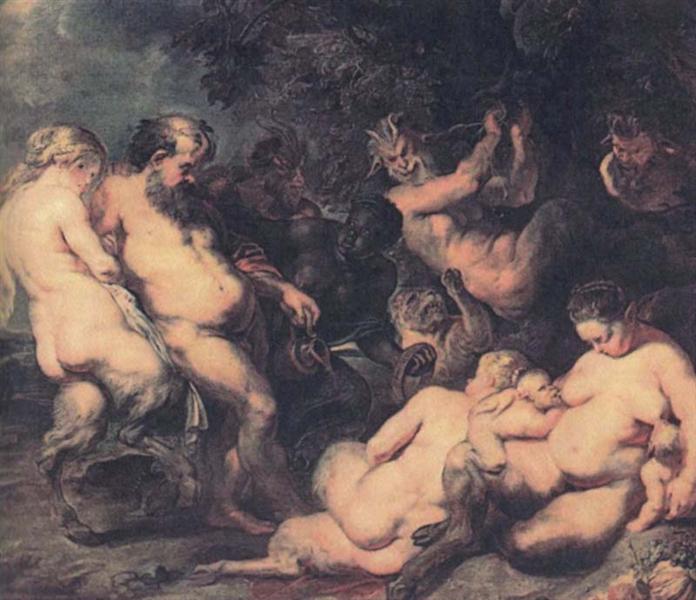Description
The painting "Bacchanal," created by Peter Paul Rubens in 1615, is a work that encapsulates the essence of Baroque art and the celebration of life. Rubens, one of the greatest masters of the Baroque, is known for his exuberant approach and ability to capture the vitality of the human body, aspects that are uniquely manifested in this work. In "Bacchanal," Rubens invites us to a visual feast where pleasure and exuberance overflow in every stroke, every figure, and every color.
The composition of the painting is characterised by the dynamics of intertwined and moving human figures, creating a sense of joy and festivity. At the centre of the work, a group of figures surrender to the ecstasy of a celebration dedicated to Bacchus, the god of wine and fun. This festive scene is imbued with palpable vitality, where the arrangement of the bodies evokes an almost dancing choreography, suggesting that art, like life, should be celebrated and enjoyed.
The use of colour in Bacchanal is another of the elements that stand out in this work. Rubens employs a rich and luminous palette, combining warm and vibrant tones that evoke feelings of pleasure and joy. The colours are applied with a mastery that gives the figures an almost mystical light, enhancing the textures of the skin and the sensuality of the forms. This masterful handling of colour not only contributes to the festive atmosphere, but also demonstrates Rubens' technical skill in the representation of the human body.
Among the characters that populate the painting, we observe the presence of mythological figures that represent a fusion of humanity and divinity. The women, often depicted in sensual nudity, exhibit a monumental and earthly beauty, typical of the Rubenian canon. The gestures and expressions of these figures reflect a profound joy, while other characters seem to offer wine, symbolizing abundance and lust. This visual frenzy reflects the philosophy of Baroque art, where the ephemeral nature of pleasure and the moment are captured for posterity.
"Bacchanal" is also set in the context of the festivals and rituals of classical antiquity, a recurring theme in Rubens' work. This interest in myths and classical history is evidence of Rubens' constant search to blend history and creativity, giving rise to works that are at the same time a tribute to the past and a celebration of contemporary life. His ability to fuse these influences with his personal style has made Rubens a pillar of Western art.
The impact of "Bacchanal" extends beyond its immediate representation, echoing artistic traditions that precede Rubens and laying the groundwork for future explorations in art. The work stands as a testament to art's ability to transcend its own era, inviting observers to participate in the experience of the celebration and hedonism it represents.
In short, Peter Paul Rubens' "Bacchanal" is more than just a depiction of a mythological feast; it is a visual symphony that celebrates existence through color, movement, and form. Through this work, Rubens manages to capture not only the essence of celebration, but also the spirit of the Baroque: an era marked by visceral expression and the search for the sublime in the mundane. This work remains a milestone in art history, one that invites contemplation and the enjoyment of life itself.
KUADROS ©, a famous painting on your wall.
Hand-made oil painting reproductions, with the quality of professional artists and the distinctive seal of KUADROS ©.
Painting reproduction service with satisfaction guarantee. If you are not completely satisfied with the replica of your painting, we will refund 100% of your money.

